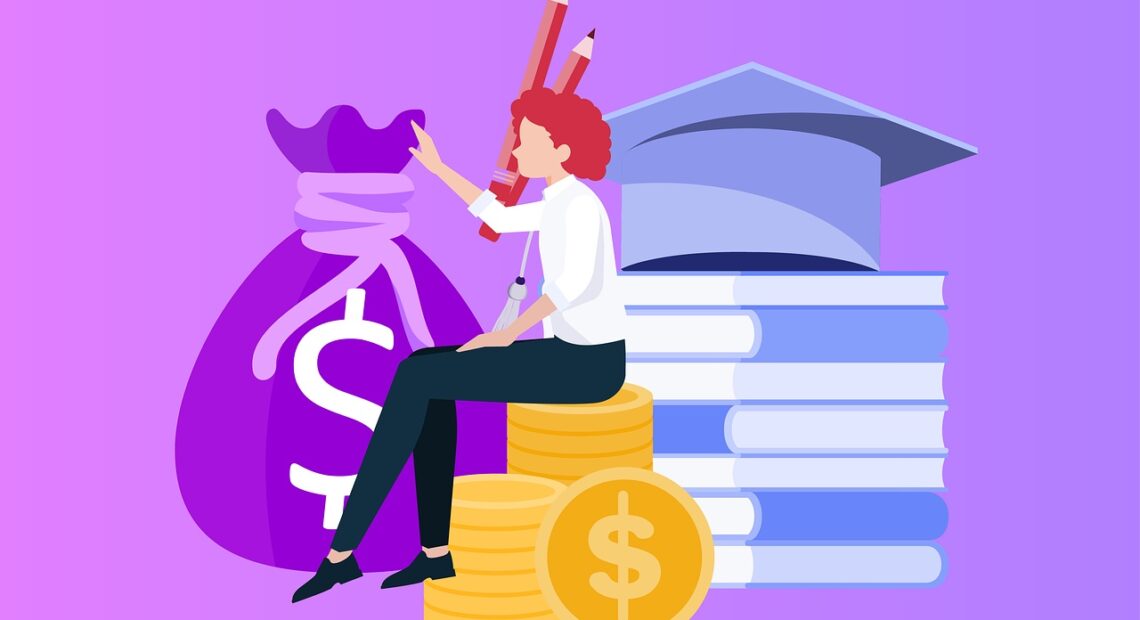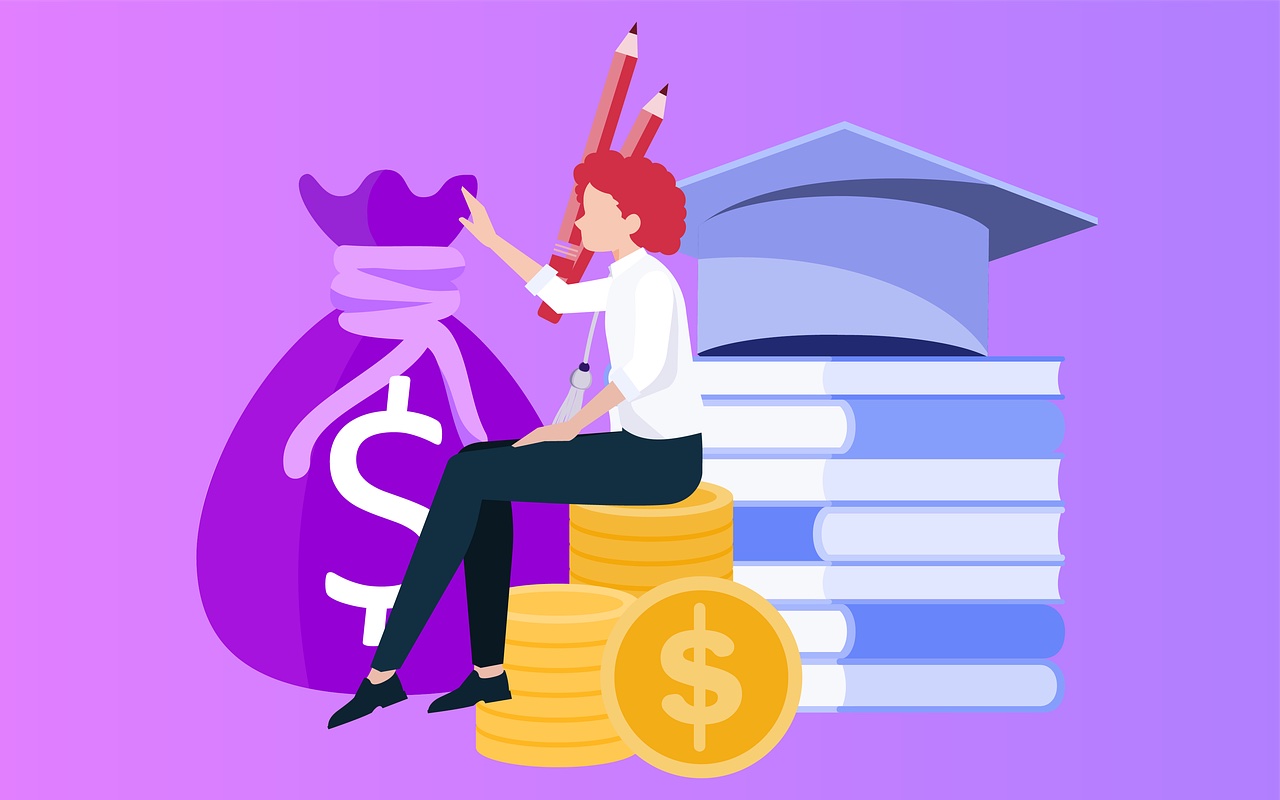
Young, educated and (trying not to be) broke — how some younger borrowers see Biden’s SAVE plan
Read and Listen
While it’s not instant forgiveness, the Saving on a Valuable Education plan does forgive debt, eventually. This month, the rules on the new program changed to make that forgiveness come a bit sooner, for some.
Now, student loan borrowers on the plan who borrowed less could see loan forgiveness in as little as 10 years, with no undergraduate borrowers waiting more than 20 years, and no graduate borrowers waiting more than 25 years for forgiveness.
“Even if your financial affairs don’t work out as you’d like them to, even if you end up with lower income then you would like to think you will, in the end, the government will forgive your loan,” said Philip Bond, a professor of finance and business economics at the University of Washington. That’s why he said he sees it as a good option for most borrowers.
However for students in their 20s, thinking about that debt being erased in their 40s or 50s feels far away.
So, what does the landscape look like for some of the country’s youngest borrowers, who have only recently begun their repayment journey? Is the SAVE plan working out for them?
To younger borrowers, student loans are a source of dark comedy
“I feel like the big joke with millennials and Gen Z is like, ‘Whatever, I don’t mind how much I take out because, you know, we’re not going to pay it back in this lifetime,’” said Jaclyn Ward over a Zoom call during her lunch break.

Jaclyn Ward, a recent grad and student loan borrower in Washington, is waiting for her application to SAVE to be approved. (Courtesy: Jaclyn Ward.)
Ward, 26, graduated from her master’s program last year and has about $53,000 in debt from her undergraduate and graduate studies. She got a job at Seattle Children’s Hospital and was planning to pay her loans on the standard repayment plan. Her payment for this month jumped from $90 to $400.
“That’s not something I can do,” Ward said.
So, Ward looked to SAVE, the newest option for income-driven repayment plans for student loans.
IDR is a different type of loan repayment than how someone would pay down a car loan or mortgage, which have fixed rates. IDR plans base monthly payment off discretionary income, then borrowers have to pay 10% of their discretionary income each month. For other IDR plans, discretionary income is calculated as income minus 150% of the federal poverty guideline for the borrower’s family size and location. With SAVE, it’s calculated as 225% of the federal poverty guideline, so it results in a lower discretionary income.
That means some borrowers will have a lower monthly payment than on other IDR plans.
Ward is still waiting for her application for SAVE to be approved, but once she’s on it, it’s looking like she’ll pay closer to $60.
Forgiveness, eventually
(Runtime 1:04)
“Oh, that’s a really good deal, but it’s coming from our government,” Ward said she thought when researching the plan, “So like, what’s the catch?”
Not necessarily a catch, but something to think about is when loan forgiveness comes around, the federal government views that as taxable income. So, if a borrower gets $100,000 in loans forgiven, that person would pay taxes on that like it was income.
The SAVE plan should, theoretically, lessen that impact. The plan comes with an interest benefit. That means any amount of interest that occurs over what the minimum monthly payment is, the government pays for. So, the balance shouldn’t go up.
“Whatever the difference is between your payment and the interest, the government is going to cover it,” said David Aizuss, who’s a financial advisor with the Student Loan Planner, a financial planning group specifically for student loans.
So, say a student’s loans accrue $1,000 in interest every month, but the borrower’s payment is $300. Payments for student loans are applied to interest first, so the borrower pays $300 and then the government takes care of the remaining $700 in interest. That remaining interest won’t be added to the balance. That doesn’t result in a deduction on the principal, but, on SAVE, the borrower eventually get loan forgiveness.
Lower payments for some
(Runtime 1:02)
According to the U.S. Department of Education, 7.5 million borrowers are enrolled in SAVE, and because of their income, over half of those — 4.3 million — have a $0 monthly payment.
That’s the case for 24-year-old Poulsbo resident, Zamora Gissel. Gissel said she owes about $190,000 in loans for her undergraduate and graduate education.
“I definitely make jokes about it all the time, cause it’s just like, I’m so insanely in debt,” Gissel said.
Since her minimum monthly payment is $0, she hasn’t actually had to put money toward that debt, but her monthly “payments” still count. That matters to Gissel, because she is working toward Public Service Loan Forgiveness. Gissel works as a speech language pathologist for a public school district.
“When I got the job, one of their big selling points was that they really helped you apply for the debt forgiveness programs,” Gissel said.
The Public Service Loan Forgiveness plan means that if she works for a qualifying employer, which she does, and she makes 120 payments — 10 years of repayment — the rest of her debt will be forgiven.
Wait it out, or get it over with — it depends
Kaylee Motter is a 28-year-old recent grad of veterinary college working in Kingston. She avoided taking out any student loans for her undergraduate degree but when it came time for her to get her doctorate to practice medicine on our furry friends, she had to take out loans — $140,000 total.
Motter graduated in 2023 and just began paying off her loans. Right now, she said repayment feels like a big hill she’s climbing but getting nowhere on.
“You feel like you’re dumping money into a hole and not really making any progress,” Motter said.
Right now, Motter is paying $0 every month on SAVE, because she didn’t have income for much of last year. With her new job starting, she’ll pay about $700 a month — which is a lot less than if she were on a non-income-driven repayment plan. She said she was looking at paying between $1,070 and $1,700 every month.
An uphill climb
(Runtime 0:51)
On other IDR plans with this job, she said she would have paid about $800 a month, so SAVE is still working out to be less for her. Because of the amount she borrowed, and because the loans were for graduate school, on SAVE her remaining balance will be forgiven in 25 years.
Having that debt for the next 25 years is something she thinks about when she considers her future — getting married, having kids.
“It’s going to be essentially a very long standing bill that you have to pay over and over again,” Motter said, referring to how it factors into her future.
While she was in graduate school, she would take out small loans and think, “Maybe this year is the year that something will be passed, or we’ll get some kind of assistance,” hopeful that some sort of loan forgiveness would come her way.
That instant forgiveness never happened. President Joe Biden tried to move forward a plan to cancel up to $20,000 of loans for borrowers who qualified but the U.S. Supreme Court struck that down. He did earlier the month cancel student debt for some, including 153,000 borrowers on the SAVE plan.
Finding solutions for student loan forgiveness is something Motter said she thinks about when she votes.
“Higher education is so inaccessible to so many people without taking out loans that any official who doesn’t have a stance or doesn’t have a plan in mind to lower those numbers, in my opinion, just isn’t aware of that larger problem, which is not good,” Motter said.
How the political environment could impact the program is a fear for borrowers like Ward. What if future administrations change the rules?
From the Student Loan Planner, Aizuss said borrowers shouldn’t worry too much about how the political landscape factors into loan repayment programs.
“[If] you do look at what has happened over the last 15 years or so, regardless of the administration being Republican or Democrat, overall, we have definitely been moving toward a place of more forgiveness vs. less,” Aizuss wrote in an email.
Aizuss said it is best to make a decision about what plan is best for you and your financial goals based on current policies and change if needed.
Finding the best repayment plan, for now
In the meantime, SAVE might not be for everyone.

Kaitlyn Jordan, 29, avoided taking out loans until the end of her degree. Now, she’s working to pay them back. (Courtesy: Kaitlyn Jordan)
Kaitlyn Jordan, 29, graduated with her environmental science bachelor’s degree in 2023. Jordan made it through much of college without loans, but she took out roughly $5,000 to help her pay her living expenses.
“I thought I had avoided, the entire time, taking out student loans,” Jordan said, “but there at the end, it got me.”
She made her first payment in January, and it came due just as she was starting a new job.
“It’s been kind of stressful, knowing I’m having to juggle that on top of starting a new job, and that’s always very stressful, because you’re always missing a check,” Jordan said.
Jordan said she wonders if she’s signed up for additional stress. She said she put herself in a payment plan that was a little higher than what she was comfortable paying, so she could pay it off more quickly — ideally, within two years, she said.
It is possible to pay more total, over repayment, on SAVE, than on another plan. With a lower payment, borrowers might not be making a dent in the principal loan balance. Depending on income, family size and the amount of debt borrowed and interest rates, a person could accrue more interest paying off the debt over a longer period of time.
However, the true value of that total payment isn’t the same today as it will be in 20 years. Because of that, Bond said he wouldn’t recommend deciding on a payment plan solely on how much someone pays over time.
“It’s really a mistake to just add up the total payment over the life of a loan,” Bond said.
The loan repayments you make further into the future are worth much less than today’s loan repayments, Bond said.
Put simply, a $150 payment now is worth more than it will be 10 years from now because of inflation. Money saved now could, for example, be invested, Bond said, to help grow your financial assets in the future.
Aizuss gave this example: “What if you’re 22 years old, and those lower monthly payments for the first five years allowed you to max out your 401K and therefore make another million dollars over the next 20 years?”
What plan would Aizuss recommend to a recent graduate? There is not a one size fits all option. When figuring out what repayment plan to get on, borrowers can use a loan simulator tool on the Federal Student Aid website. That simulator goes through different options based on repayment goals.
Bond said, “I don’t see a big downside for anyone with this program.”
That’s considering the factors of eventual loan forgiveness and for most borrowers, lower payments now.
Looking ahead, there’s more changes coming to the SAVE plan. Remember how the amount paid on an IDR plan is based on a percentage of discretionary income? In July, on the SAVE plan, that percentage will drop from 10% to 5% for undergraduate loans, making monthly payments lower.
















